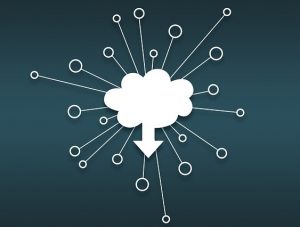When we think how far computers have gone in the past fifty or sixty years, we can truly say that we live in the future. Once, a computer with a few megabytes of memory space could barely fit in a room, whereas today we can store terabytes of memory in our pockets. Technology has certainly changed our lives and made them easier. One of the things that are truly remarkable is that we do not need to physically access memory and storage space –we can do that by accessing our cloud storage from our computer or phone. Cloud computing has revolutionized the way we view storage.
What is cloud computing?

Cloud computing is the ability to utilize computer resources that are not physically accessible to the computer or the user. Generally, this refers to the service most cloud services provide via the Internet. In even simpler terms, any user with an Internet connection can access a cloud and use data or applications from any cloud device that has access to the Internet. One good example of such service is Gmail, as the users do not download any messages or data on their own computers, but rather access it with a computer and an Internet connection.
How does it work?
This online delivery of resources does not require you to own physical servers or centers but rather presents itself as more of a service. The users pay as they go along, paying for the traffic that they make, which makes for a cost-efficient storage option. This type of computing is not restricted to large companies only –everyone can use the cloud for a more efficient way of working. There is also, of course, some terminology connected to cloud computing that may not be very clear to those who are introduced to it for the first time.
What kind of clouds are there?

There are three basic distinctions when it comes to the type of the cloud: public, private, and hybrid. Public clouds are those clouds that are accessible by the general public, with little to no restrictions; all users use the same resources of the cloud and the same technologies. The structure of private clouds is not too different from public ones, except for the security levels, which are significantly higher and more complicated. Private clouds are used by companies who either own the data center or rent a third-party one; the services of that cloud are exclusively provided to that organization. Hybrid clouds combine the previous two so the users can have the best of both: the security of private clouds, and the volume and speed of public ones.
What service models of clouds exist?
Cloud-computing providers have three basic service models according to which they operate: IaaS, PaaS, and SaaS. SaaS stands for Software as a Service, and it refers to those models which use the Internet for delivering information, with no download made on the users’ side. PaaS stands for Platform as a Service, which is similar to the previous one, except PaaS provides a platform for creating software rather than delivering software over the Internet. IaaS stands for Infrastructure as a Service, and it delivers computing resources to the users, based on their demands. This is especially convenient for companies, which can purchase resources without having to physically buy hardware. Each of these options is suited according to the different needs of the users, and it represents the revolution in data management.
